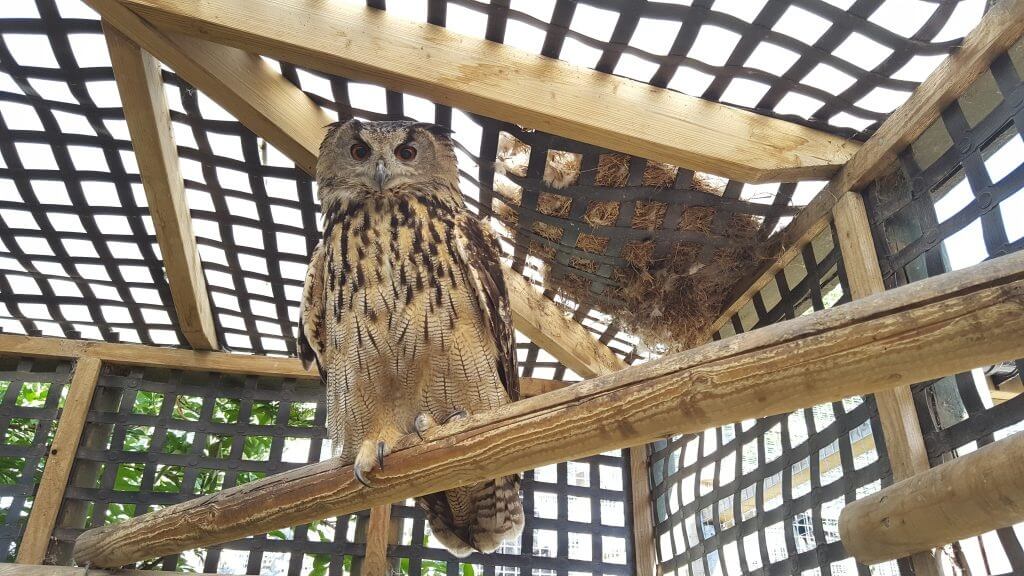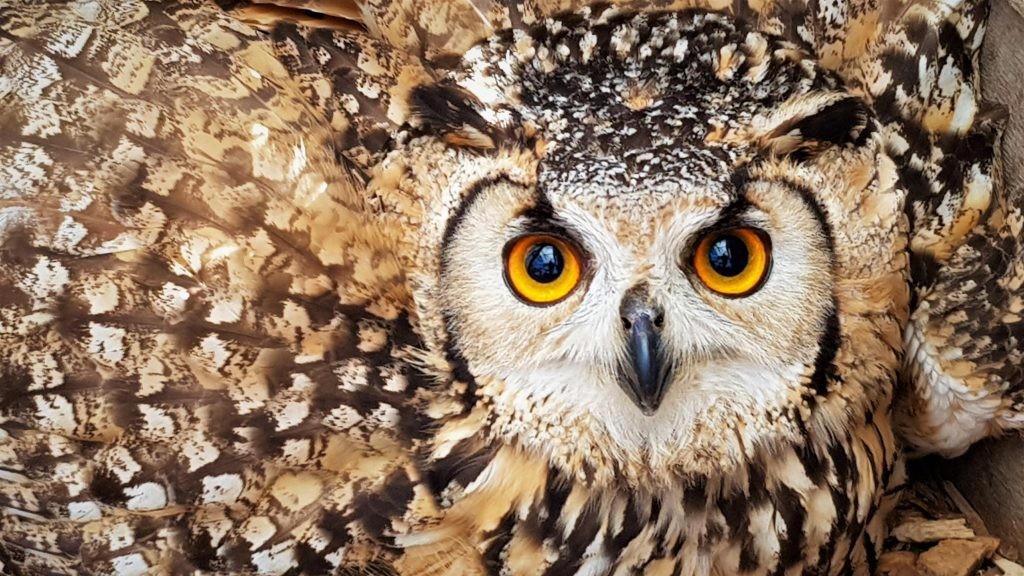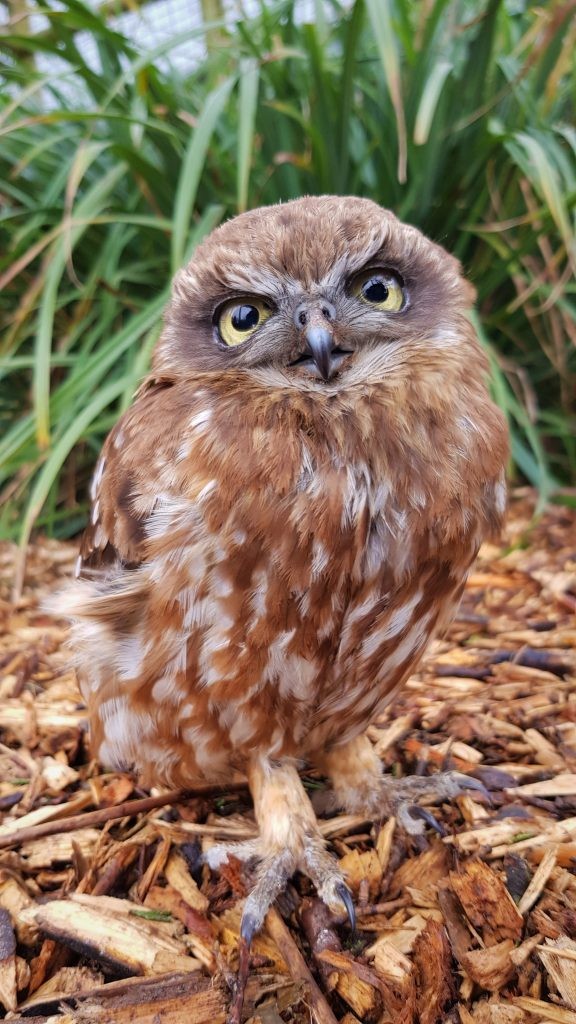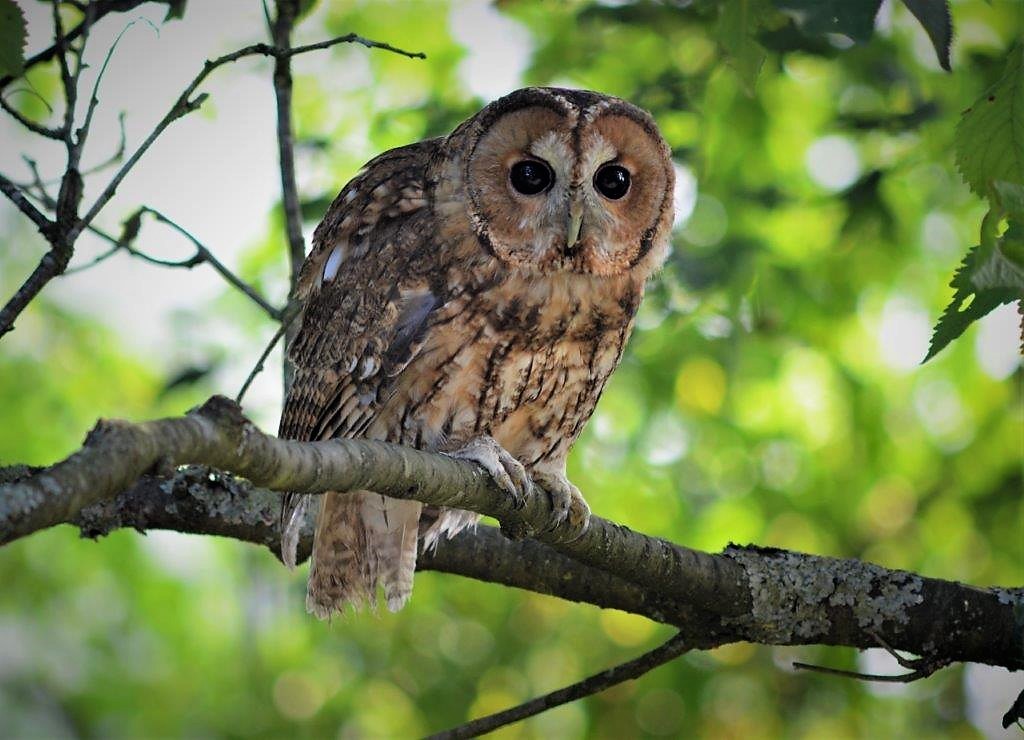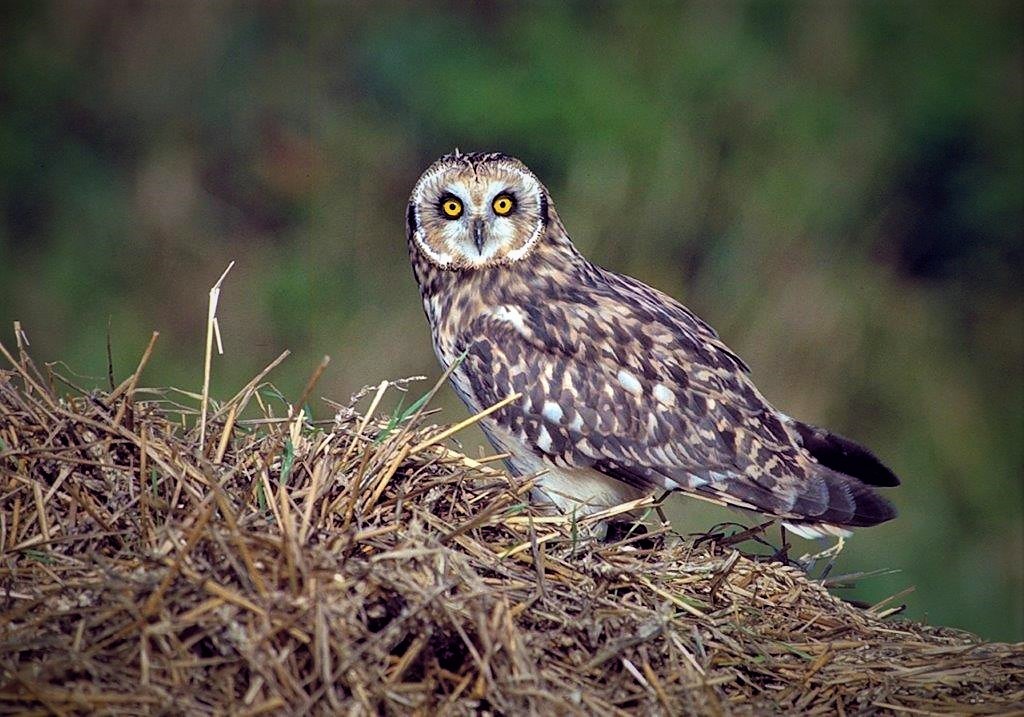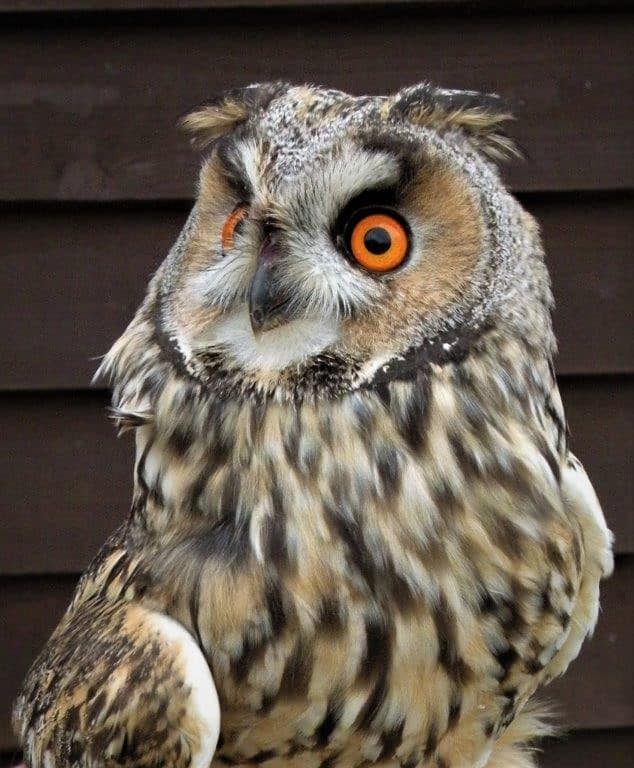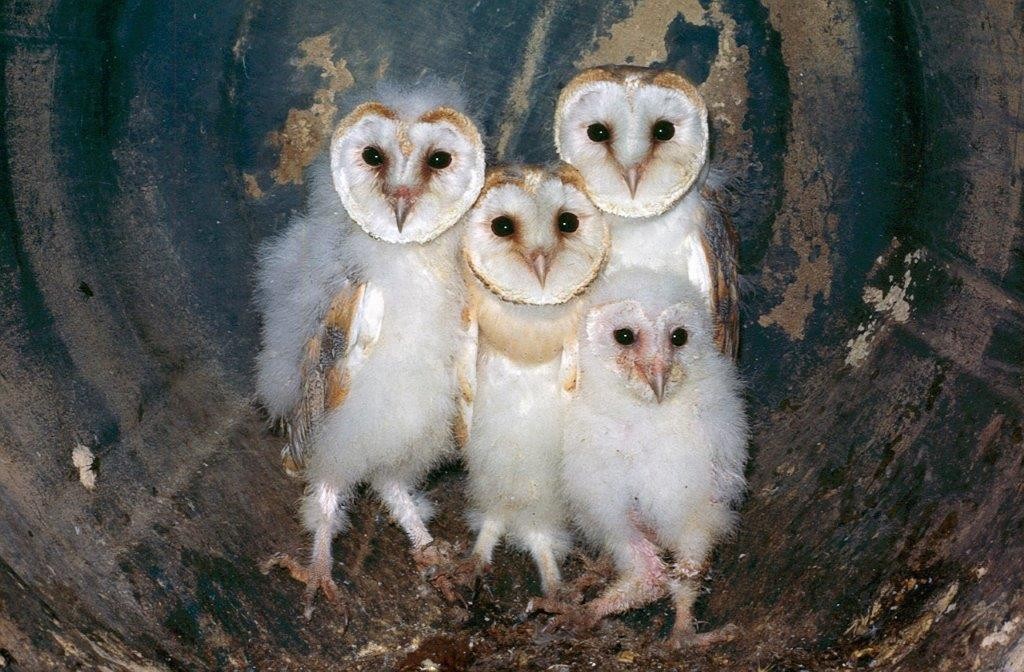As head of section for the bird team, it’s safe to say that I’m a bit obsessed with anything that has feathers! I’ve always been fascinated by birds of prey, and in particular, owls! I spend a lot of my free time out birdwatching and any day with close views of an owl is an excellent day’s birding! I don’t think I’m alone with this adoration, surely they have to be one of the nation’s most loved birds too. This is probably because of their charming big eyes, cute fluffy appearance and funny antics. But there’s more to owls than meets the eye, and that is why I’d like to turn my attention to this remarkable group of birds for this week’s blog.
Worldwide there are around 200 different species of owl, all in the order Strigiformes. I’d like to just focus on the owl species we have here at the park, and about the owls we can see right here in the UK. It always surprises me how few people have seen an owl in the wild, so I’ll also try to point you in the direction of some great local sites in Kent where you can try to see owls for yourself!
Owls at Wingham Wildlife Park
Here at the park we have three different species of owl. The largest being our Eurasian Eagle Owl, one of the largest owls in the world boasting a wingspan of over 4ft! As is the case with all owls, the business end is their feet. With their sharp, powerful talons they mainly hunt small mammals like rabbits.
As its name suggests they range across most of Northern Europe and Asia. Sadly a species that hasn’t been considered native to Britain and Ireland for 200 years, but there are reports of a small feral population now developing in the UK.
We also have two female Bengal Eagle Owls, which are an Indian species. All in all their diet is very similar to the Eurasian Eagle Owl.
I often get asked if the tufts on their heads are their ears. But actually they are just for show. Owls in fact have wonky ears! Their asymmetrical position means they can accurately pin point exactly how far away a sound is coming from. Twinned with excellent vision this makes them a pretty formidable predator! Even their eyes aren’t true eye balls and are instead tube-shaped. Their vision is like looking through a pair of binoculars, they can see things far away brilliantly, but can’t see much at all right in front of their face. Their eyes are SO big they are completely immobile and fixed in their head. Probably why they have the ability to turn their heads right round 270 degrees!
Our final species here at the park is Timmy the Boobook Owl. He is one of the biggest characters on the bird team and can often be heard chirping to us. He can sound like a grumpy old owl, but this noise is actually just him getting excited for food. Even though he is 10 years old now, he still makes these baby noises at the keepers regularly. Boobooks get their name from their unique call and are the most widespread owls in Australia but can also be found in New Guinea and a little island off Indonesia called Timor… hence the name Tim!
We often fly Tim on the green opposite the penguins (weather dependant). Did you know owls have completely silent flight? Their outer flight feather has a comb-like edge which breaks up air currents meaning their prey has no warning of an owls approach!
Get closer to the owls at our park with our Keeper For The Day Experience where you can help feed and care for them and many of our other animals too.
Britain’s Owls and Where To See Them
Here in Britain we commonly find five species of owl, with an additional three that occur less regularly. If you tried to describe the noise an owl makes you’d go for the instantly recognisable sound “Twit Twoo”. There is actually only one species of owl that makes this noise and that’s the nocturnal Tawny Owl. If you go to any woodland at night in Kent, you’re highly likely to hear this eerie call. In fact if you do hear the “Twit Twoo” call you’ve actually found two birds! The females say “Twit” and the males “Twoo”. Sadly this is a species that has recently been moved to the Amber List of Birds of Conservation Concerns because of a long-term population decline.
My favourite owl here is actually a winter visitor to Kent, the Short-eared Owl. Probably the most reliable site to see these is at Sandwich Bay Bird Observatory. If you go on a nice day in the winter with no wind, you’re very likely to see one of these cruising towards you hunting over the sand dunes. By the end of March though they would have returned to their breeding grounds, the upland areas of Scotland, or even further afield in Arctic Tundra!
Now I know what your thinking… if there’s a Short-eared Owl, there’s got to be a Long-eared Owl! And you would be correct! These are very secretive birds and probably the hardest to try and find in the field. They are another species where we tend to get move individuals joining us in the winter, but sadly used to be far more common than they are today. They seem to prefer the milder climate across the North Sea!
In Kent your best chance of seeing one is probably at Dungeness, as for the last few years two have spent the winter here. Ask the volunteers at the centre if they have been seen and where to find them. They are so well camouflaged, it might be worth asking a birdwatcher with a telescope. They might be able to point you in the right direction if they’re at this fantastic reserve.
Now another majestic species has to be our native Barn Owl. Worldwide there are 16 different species of Barn Owl! Ours is specially protected in the UK and I feel very lucky to be able to monitor the nests of these birds under the supervision of my friend John from Sandwich Bird Observatory. A huge thanks to him for letting me use his photos of the wild owls featured in my blog. He has a special Schedule 1 licence that allows access to the nest to fit a special bird ring to their leg which tells us a whole host of information if the birds are seen again. To find out more about bird ringing see my previous blog here.
The best place to try and spot Barn Owls in Kent probably has to be the Raptor Watch point on the Isle of Sheppey. Again make sure you pick a still day as owls tend not to fly as much in strong winds and rain… maybe they can’t hear their prey? Get there an hour before dark and watch what comes in to roost.
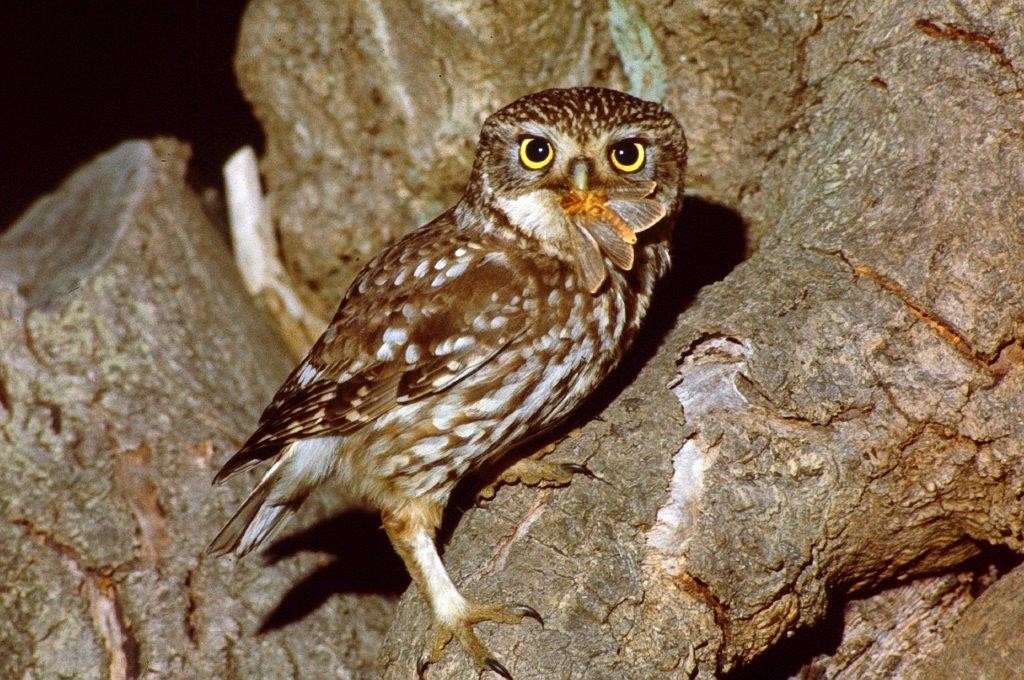
Little Owl
One of my all-time favourite moments was coming home at night and seeing a Little Owl running around on the grass catching moths!! I can’t even explain how hilarious it looked standing upright as tall as it could and then pouncing on a moth once it had spotted it. Such an iconic part of our British countryside, we even have them here at the park. This time of year you can hear their cat-like calls up by the lake. They’re actually a non-native species which were first introduced into Britain in the 1800s and is now well established.
The other two species we haven’t mentioned yet are the Snowy Owl, which has never bred in the UK but can usually be seen each year. You would have to trek up the highlands of Scotland to try and find one though!
And amazingly we have a species that has only been recorded 5 times in the UK. A Tengmalm’s Owl was famously photographed on a toilet in the Outer Hebrides a couple of years ago and caused a storm on social media. Another one was found on Shetland in February this year and caused a massive twitch with birders travelling to this remote island to see the rare bird.
Well I hope you have enjoyed reading about owls and that you have learned something new too. Hopefully I have inspired you to go exploring and see them for yourself.
